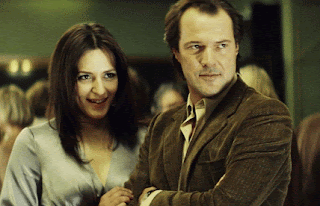There have been many films dealing with corruption and red
tapism at government and administrative level. While some of them are quite
open in their attack, others use metaphoric style to convey the same message.
Beru, a Kannada film by P. Sheshadri, falls in the second
category.
Director: P. Sheshadri
This indeed is one of the best films by P. Sheshadri, the
Kannada parallel cinema director. The story is about an old folk artist Goravayya
(Venkata Rao) who fights to get permission to cut a tree, the roots of which
have crept into his hut. However, he is caught in the web of corrupt and non-functional
bureaucracy which makes his life difficult at each stage.
The film raises several issues like corruption and careless
attitude of administrative system in the country. It also deals with a
situation showing how difficult it is even for an honest officer Raghunandan
(Sucheendra Prasad) to be clean and upright, given the system which is prone to
dysfunction and corruption.
The title is indeed metaphoric as it is also a symbol for
the deep-rooted disorder and recklessness of most of the administrative system.
Camera work and the screenplay is spot on. It truly deserves the National Award
that it has won.
- Melwyn Pinto SJ




































